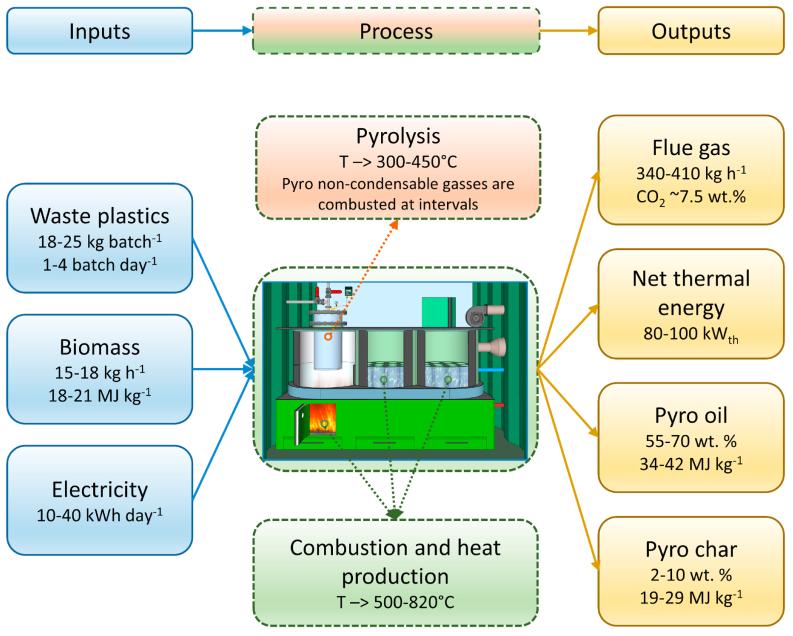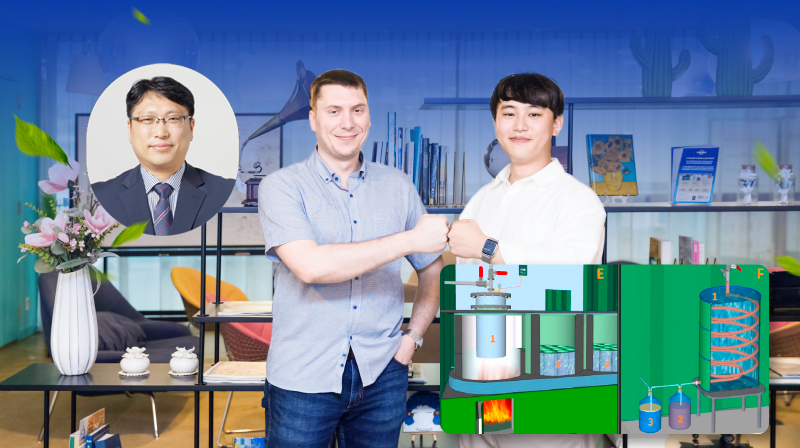Thermal pyrolysis of plastics has drawn considerable attention as a reliable and emerging technology for resource recycling since it can create valuable by-products in the process.
A recent study reported that using a decentralized plastic pyrolysis model, combined with seasonal heating demand, profitability can be increased and the process is unlikely to show a loss of profit when compared to the centralized process. This breakthrough has been led by Professor Hankwon Lim in the School of Energy and Chemical Engineering at UNIST.

Figure 1. Decentralized pyrolysis unit material and energy balance.
In this work, for the first time, the research team demonstrated a proof of concept, pilot-scale cogeneration system for biomass heating and plastic-derived pyrolytic oil production. The research team further assessed a disruptive techno-economic business model for decentralized plastic pyrolysis. They, then, compared it with a traditional centralized industrial system through superstructure supply-chain optimization.

Figure 2. Waste plastics processed (a), the annual net profit (b), and the feedstock transport related CO2 emission (c) for centralized and decentralized processes denoted in yellow and purple respectively.
Their findings revealed that using a decentralized plastic pyrolysis model, combined with seasonal heating demand, profitability can be increased and the process is unlikely to show a loss of profit whereas the centralized process may show losses. Furthermore, compared to centralized pyrolysis, transportation costs, and related CO2 emissions were significantly decreased by 3–10 x and 1.4–7 x respectively, according to the research team.
Their findings have been published in the August 2022 issue of Journal of Cleaner Production. This study has been carried out in collaboration with researchers from Lahore University of Management Sciences in Pakistan.
Journal Reference
Manhee Byun, Rofice Dickson, Boris Brigljević, et al., “Demonstration of feasible waste plastic pyrolysis through decentralized biomass heating business model,” J. Clean. Prod. (2022).















